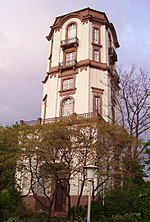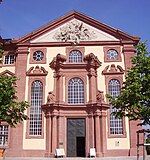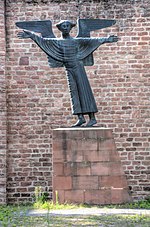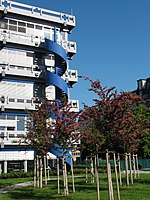Jesuit Church, Mannheim

The Mannheim Jesuit Church is a Catholic church of historic and artistic importance in Mannheim, Germany. Church construction was begun in 1733 and completed in 1760. It was consecrated to St. Ignatius of Loyola and St. Francis Xavier. During the Second World War, the church suffered severe damage from air attacks; after the war it was rebuilt in its historical style using original parts. The church displays many Baroque features in its exterior and interior. The exterior includes a twin towered facade, statues of the four cardinal virtues, and a 75 m high dome. The interior includes marble pilasters, a dome decorated with scenes from the life of the order's founder, and several organs. The most important sculpture is the 1747 "Crowned Silver Madonna." The Mannheim Baroque bell was cast in 1754, and recast in 1956 into five bells. In 1975 another two bells were cast. The bells are now distributed between the exterior two towers.
Excerpt from the Wikipedia article Jesuit Church, Mannheim (License: CC BY-SA 3.0, Authors, Images).Jesuit Church, Mannheim
Mannheim Innenstadt (Innenstadt/Jungbusch)
Geographical coordinates (GPS) Address Website External links Nearby Places Show on map
Geographical coordinates (GPS)
| Latitude | Longitude |
|---|---|
| N 49.486 ° | E 8.461 ° |
Address
Jesuitenkirche
3
68159 Mannheim, Innenstadt (Innenstadt/Jungbusch)
Baden-Württemberg, Germany
Open on Google Maps










